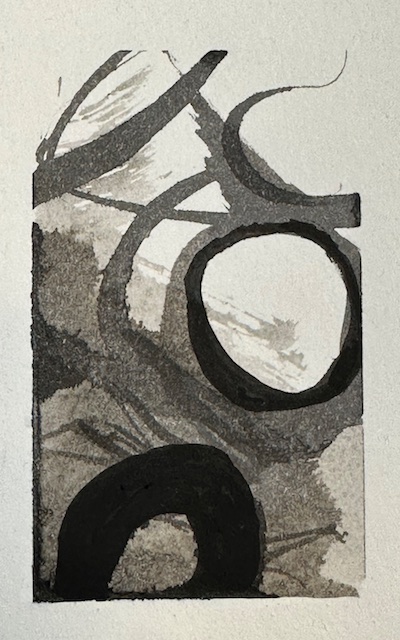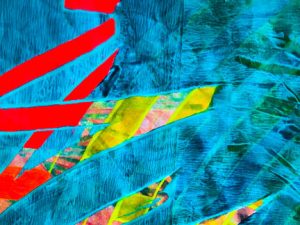I’ve been pondering composition for its own sake lately, and the grid journal is a great place to pursue that. I haven’t worked in my grid journal for a while– my last post about it was a year ago– and I’ve missed it.
Yesterday, I took a piece of watercolor paper and divided it up with masking tape as shown below. I quickly doodled on some diluted India ink (for mid tones), followed by some full strength ink, leaving some white space.
After letting it dry and removing the tape, I cut it up, and examined each miniature, inadvertent composition, analyzing its respective merit. Out of the 16, only 6 I thought had something going for them; the other ten I’ll save to work on more later. I glued these six into my grid journal. (Next time I should measure where my tape goes so they are more the same size!)
If you do this, the analysis is the instructive part. Use these little compositions to make yourself explain why a composition works, and why it doesn’t. Are there big shapes, medium shapes, and small shapes? Is the whole value range present, in different proportions? Does your eye move around throughout? Is there a focal point, with interesting supporting areas? Does the piece have any energy? Balance?
This kind of exercise can keep you out of a rut, because you’ll come up with compositions, or compositional elements, that inform your real work, which you’ve never done before. It also helps you see what you like and don’t like. Since these were random and based on chance, they kick up more variables for you to assess, which gives you more possibilities to intentionally bring to your larger work.
Give it a try!
1 Comment
-
I so love your art classes! They are very informative and helpful.
Thank you!!














